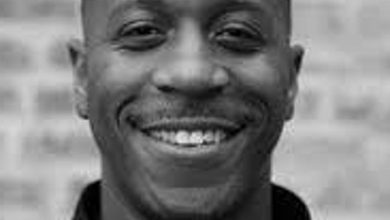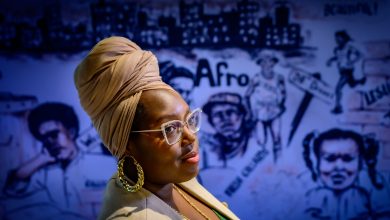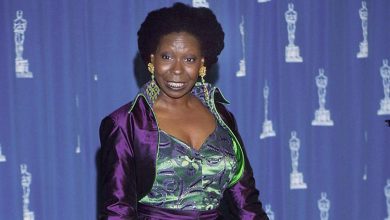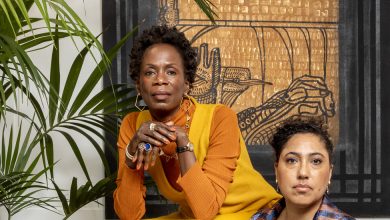Entropic, dapper, vibrant — How these Yalies embody Blackness through style
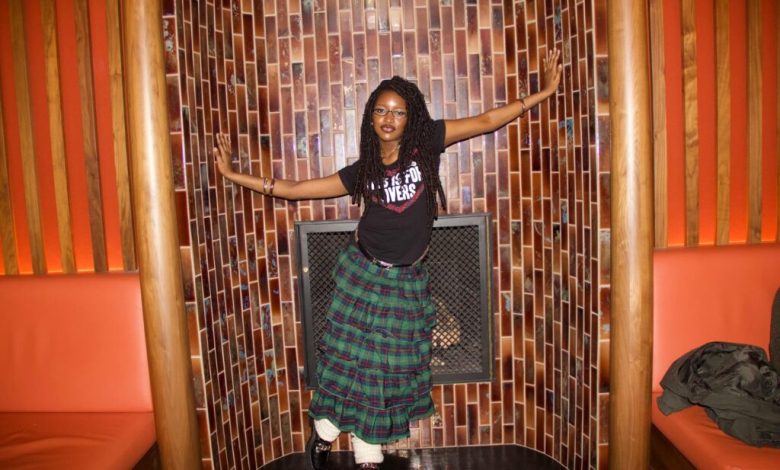

Shela Mensah, Contributing Photographer
From streetwear to zoot suits, Black aesthetics and fashion trends have shaped contemporary designs and styles. Here’s how six Yale students integrate and embody their Blackness through their everyday fits.
For Zara Belo ’25, style is entropic, fluid and always evolving
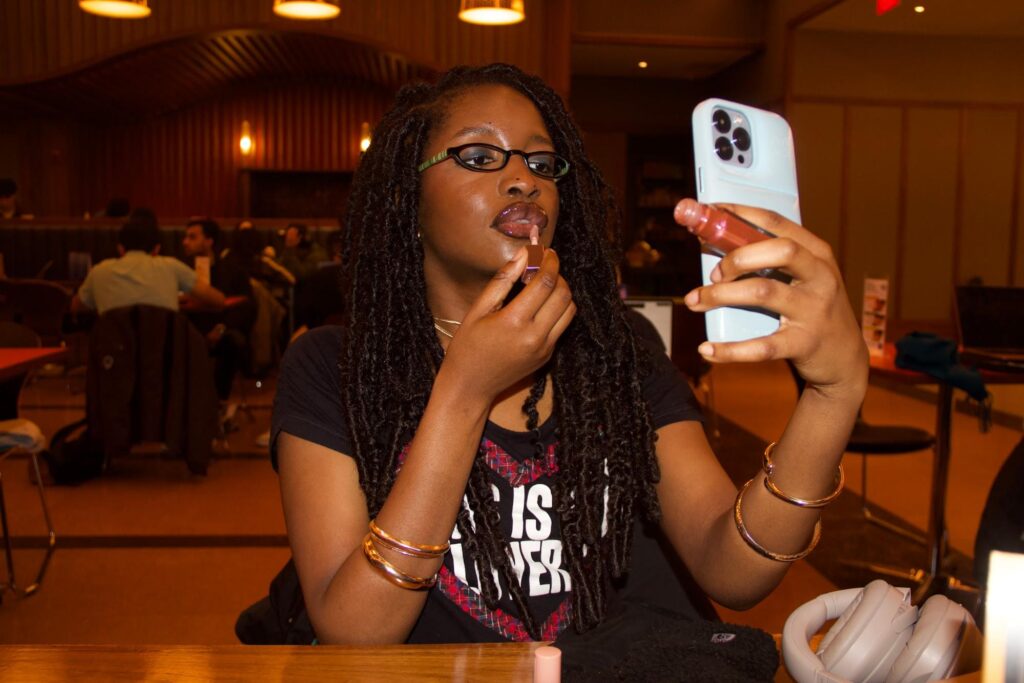
Zara Belo ’25 describes her style as dynamic and chaotic; what starts as a planned outfit the night before can easily transform into something entirely different by morning.
For Belo, fashion is a constant state of experimentation, influenced by her younger obsessions with anime, J-pop and video games — three artistic worlds where aesthetics are exaggerated and unbound by convention.
“In an ideal world, I would dress like a cartoon character,” she said, referring to the colorful and playful visuals of anime and video games.
Belo’s fashion journey began in childhood, where her mother’s influence dictated her choices. However, middle school marked a great shift where she took on the task of dressing herself.
“Middle school was a turning point,” she said. “I was on Tumblr, getting into alternative subcultures, with darker colors and striped T-shirts.”
There, she started to pull away from the confines of her mother’s clothing choices – ruffles, lace and what Belo described as “western style of clothing” — and began experimenting with her own.
Embracing the freedom that came with a fresh start in college, Belo is constantly experimenting with new accessories, pieces and styles.
“Now I feel like I’m a bit lost again,” said Belo. “I’m not sure if it’s because a lot of the things I wear don’t fit me anymore but I’m back to an experimental stage, just with less effort.”
Davianna Inirio ’27 embraces the vibrancy of color and lets her art flow through her fashion
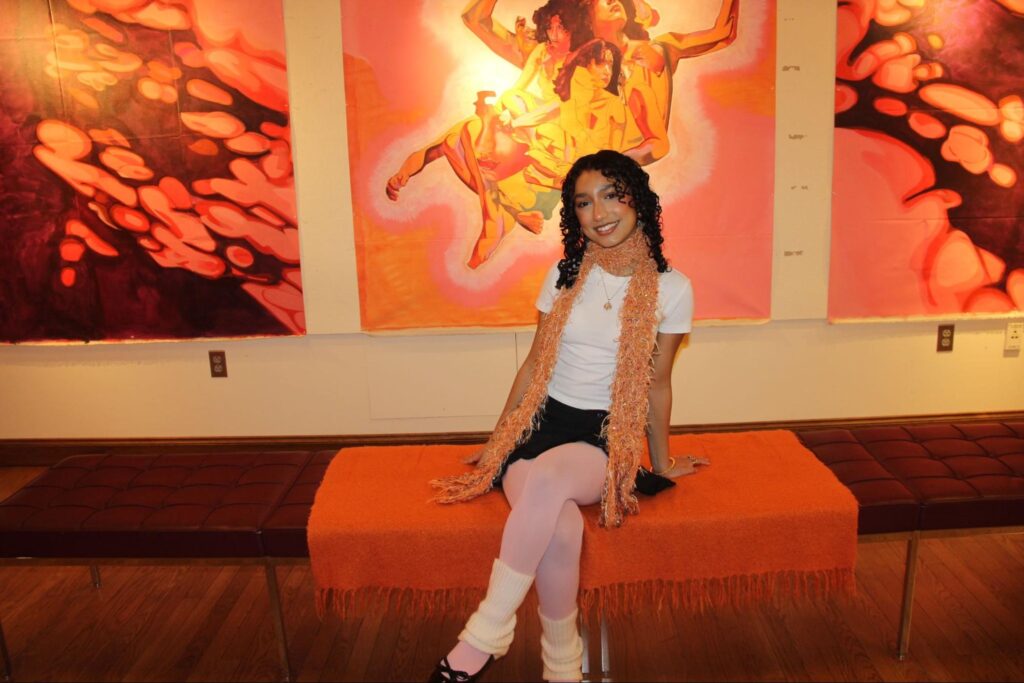
Born and raised in Miami, Davianna Inirio ’27 has a staunch appreciation for color and form — something that does not go unnoticed in her fashion. As a visual artist, whose medium spans painting, Inirio uses vivid colors — often in the hues of orange — to express herself both fashionably and artistically.
Growing up in a Dominican family, Inirio’s mother, whom Inirio described as a “wannabe designer,” instilled in her a great understanding of color, composition and balance.
“She’s one of the first people that taught me about complementary colors,” said Inirio.
Donning a symmetrical orange scarf, pink tights, white leg warmers, Inirio creates an ensemble complete with playful yet intentional elements.
Such a bold embrace of color through her style was not always the norm for her, she said. Growing up, she dressed in more beige or neutral colors.
“I was just trying to do what everybody else was doing. And I think it was very tiring– trying to fit in,” Inirio said.
It wasn’t until the pandemic that she started to experiment, going back to the basics of what her mother always taught her. With time and self-reflection, Inirio learned to apply the same sense of creativity that guided her brushstrokes to her clothing.
This period of experimentation, Inirio said, helped her shed the pressure of external expectations, allowing her to fully embrace personal expression.
Miles Kirkpatrick ’27 pays respect to “the Ivy League of the 1960s” through his dapper fits
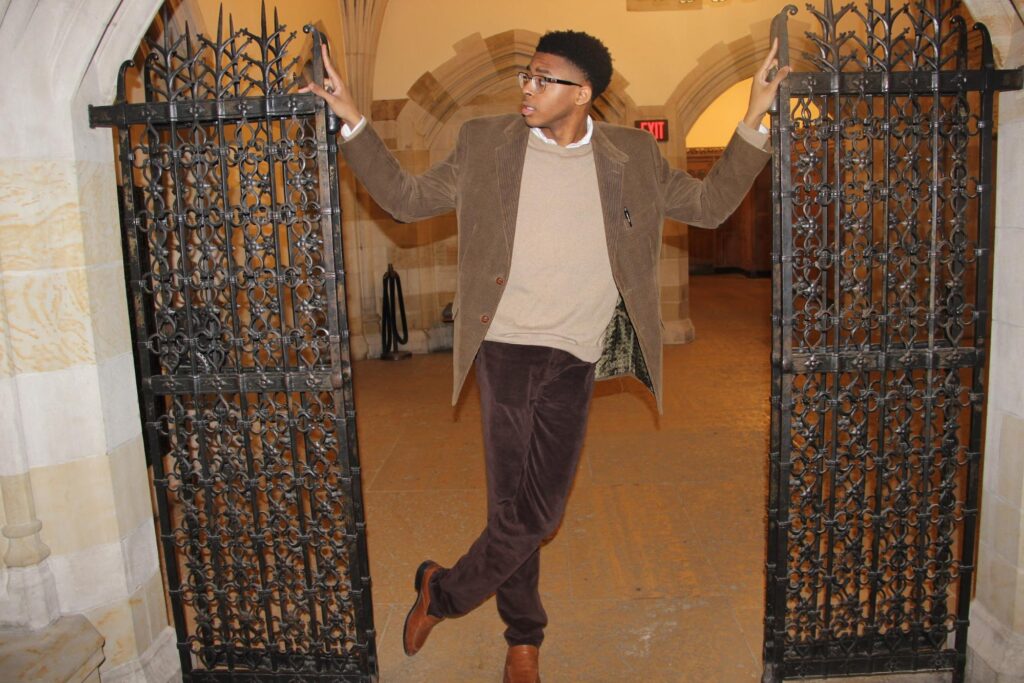
Miles Kirkpatrick’s ’27 style is one that is more familiar to the watchful Ivy League eye. From trench coats, button-up shirts, dress shoes and leather flapovers, his wardrobe is reminiscent of the mid-20th century elite collegiate fashion.
For some, the prep-style look is an aesthetic, once synonymous with the exclusivity of such spaces; for Kirkpatrick, it’s a style to experiment with.
Ultimately describing his style as one born of efficiency, he said that he started dressing in these more formal fits while competing in moot court.
Kirkpatrick said that his style allows him to move seamlessly between spaces on campus — from classrooms, meetings and casual gatherings — without needing to adjust his outfit.
“I could go from being a full courtroom with a jacket on, a blazer, like a suit jacket on and a tie to being outside warm with my feet rolled up in no time,” he said.
Reflecting on his biggest style inspirations, Kirkpatrick mentions the Ivy League, prep-style of the sixties, prominent collaborations like that of HBCU Morehouse and Polo Ralph Lauren.
Both are examples of collections that pay homage to the legacy of Black collegiate fashion where, according to Kirkpatrick, Black students had no choice but to dress better than their counterparts to earn respect.
Although the undertones of “respectability” in the world of moot court and everyday Yale is not the driving factor of Kirkpatrick’s dress, he acknowledges that comes as a subsidiary benefit.
“Tying respectability with dress is dumb,” he said. “Other people do, and I’ve seen that growing up … I wasn’t really trying to [seem respectable] but it’s certainly helpful that it does.”
Kellsie Lewis ’27, founder of Fashion Lifestyle at Yale experiments fearlessly
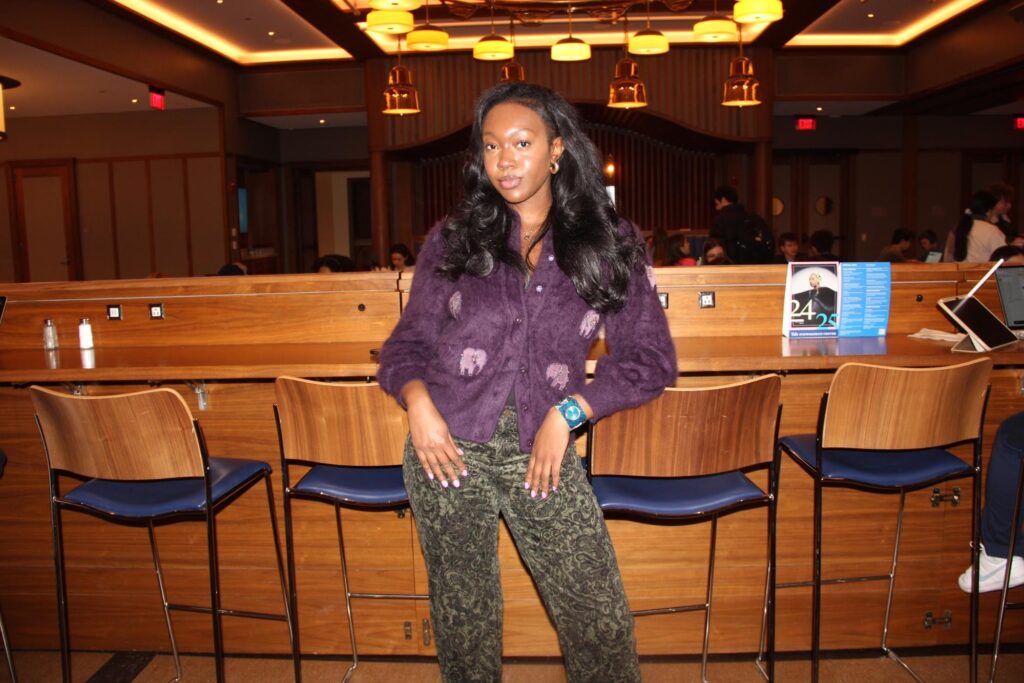
Kellsie Lewis ’27 founded Fashion Lifestyle at Yale, or FLY, in the spring of her first year. The space was born from a need to cultivate a space for Black and minority fashion on campus, Lewis said.
However, FLY was not Lewis’ first fashion endeavor. During the pandemic, Lewis founded Lavish Couture, an online women’s fashion lifestyle brand. Through that, she experimented with business, creativity and self-expression. Her newest endeavor, Carbon by Kells, hopes to bring a reimagined look to pre-loved clothing.
For Lewis, fashion — specifically Black fashion — is more than clothing. It’s a language of confidence, self-expression, and authenticity, she said.
From the colors to the accessories she wears, Lewis describes her style as “flowy chic.” Lewis’ fashion journey was not always this defined. After attending private, predominantly white private schools for most of her life — where uniforms left no room for experimenting — she found herself drawn to clothing as a way to express herself, she said.
“The pandemic definitely gave me space to find myself through fashion,” she said. “I wore lots of berets, hair accessories, and shoes like Yeezy boots, which aren’t really my style anymore.”
Even as her style changed, certain staples, like the color pink, remained a constant.
“Pink is my color, I never grew out of pink,” she said.
70s-style flared denim, cowboy boots, berets: Christian Daniels ’27 is bound to stand out
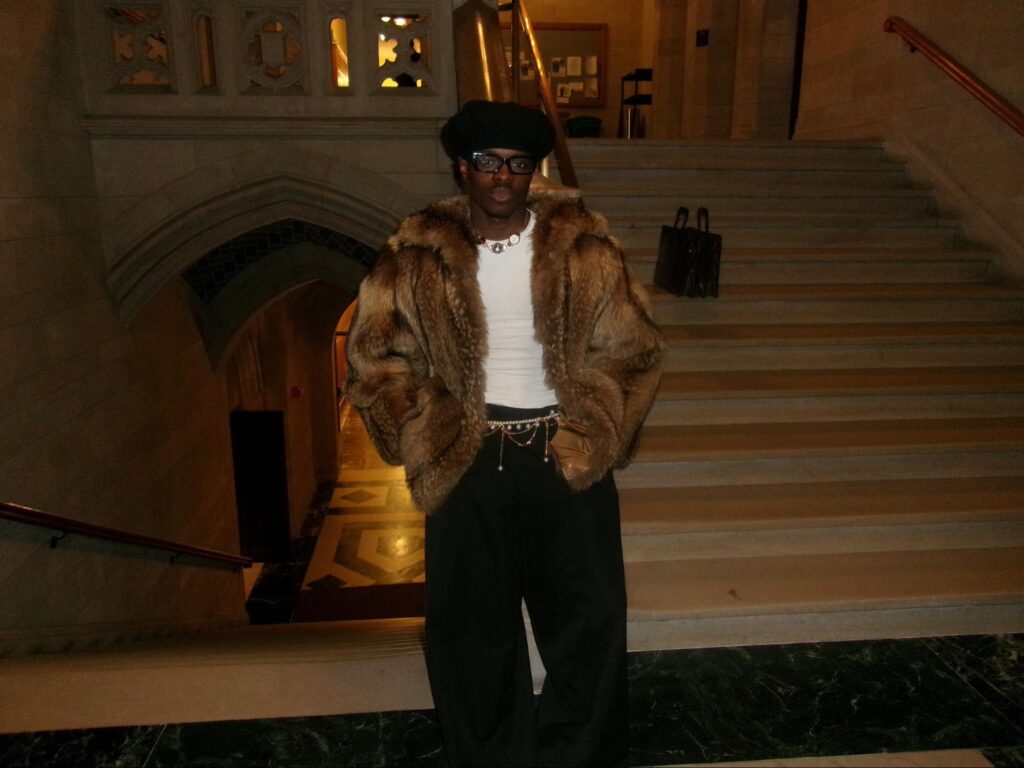
Some students may turn to their favorite Instagram influencers or Pinterest for their fall style inspiration. But not Christian Daniels ’27.
When asked about his greatest style inspirations, Daniels said that his fits were largely influenced by African-American culture.
“I think honestly, it all comes down to my culture, specifically in African-American culture. There is a strong value placed on dressing well and presenting oneself with pride.”
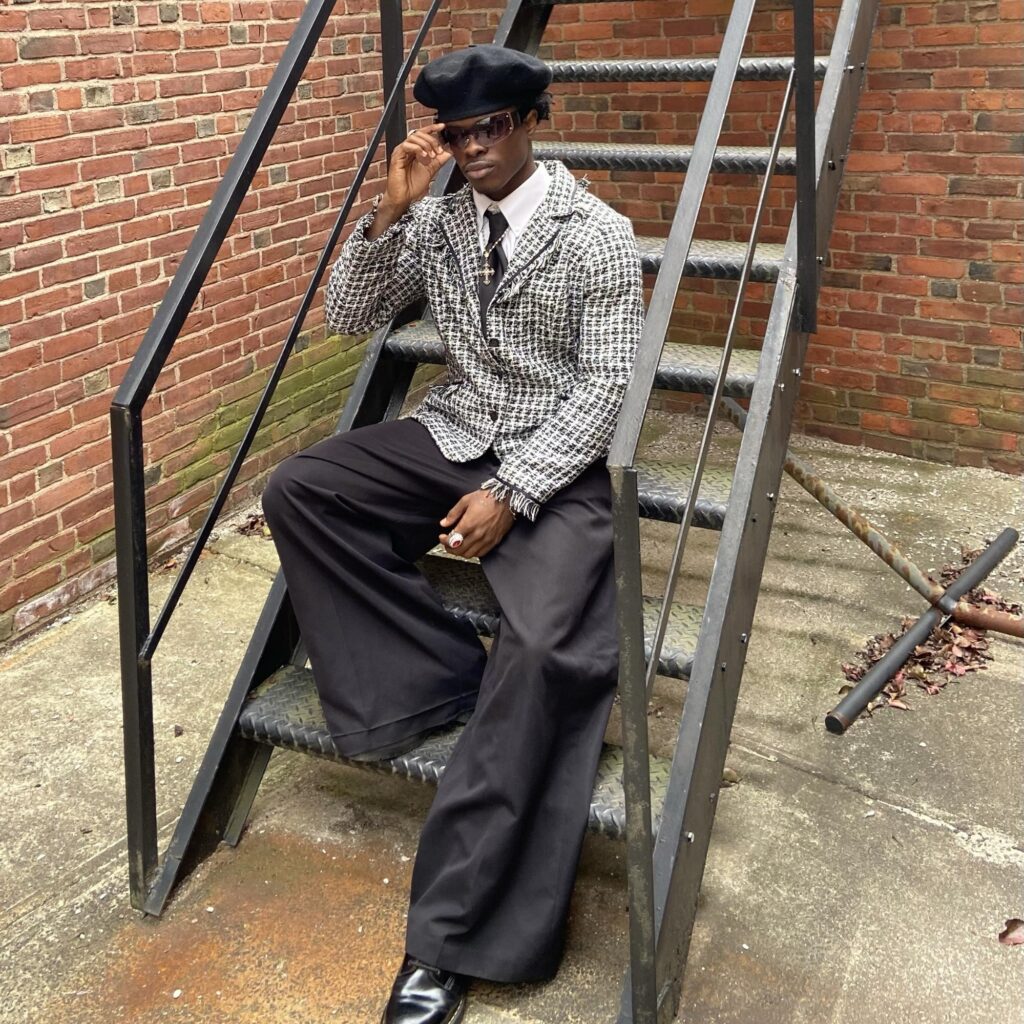
Some of his most beloved and prolific pieces are berets and articles made of fur and leather. During the interview, Daniels proclaimed his love for “a good headpiece,” pointing to the black beret worn on his head.
Fur is one of the more challenging pieces to style, according to Daniels. For Daniels, this is all the more reason to love fur.
“I consider myself fun, I like to talk to people, and I think fur is very, ‘I’m here’ and it communicates my personality too!” he said.
Erin Kearney ’27 is curated, sustainable and experimentalist
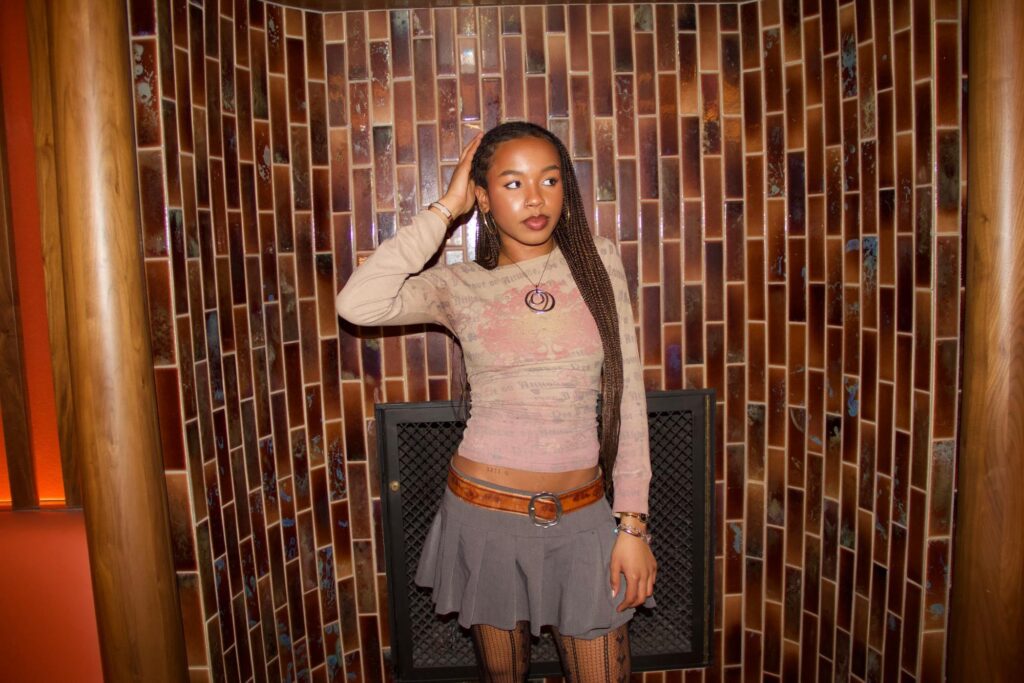
Inspired by ’90s hip hop and throwbacks, Erin Kearney ’27 prioritizes sustainability in curating her wardrobe.
When Kearney shops for clothing, often in the form of thrifting, she makes sure to keep in mind the pieces that she already has and only looks for ones that complement what she owns.
From pre-loved clothes, Kearney wanted to establish her own-style. Consuming fashion content from micro-influencers on TikTok and Instagram, she quickly realized that she wasn’t cultivating any sense of personal style, just merely imitating what she saw online.
“I would get micro influencers on my ForYou page, and I realized that I was just trying to replicate, which wasn’t working for me,” she said. “Since COVID, I’ve made a conscious effort not to idolize specific people.”
As she shied away from imitation and towards a more personal approach to style, Kearney said that she began to consider the implications of fashion and Black identity.
“I like that you’re forcing people to see you in the way you want to be seen,” she said. “My style has helped me build myself and my Blackness.”
Yalies on Black fashion at Yale
At Yale, Kirkpatrick sees a range of Black fashion identities, from the bold, expressive styling of FLY members to the effortless curation of students like Christian Daniels ’27.
“I think Christian and [Kellsie Lewis ’27] have mastered their fashion language,” he said. “For me, it’s like going to the French table at lunch, I respect it, but I speak German.”
Much like her own personal style, Zara Belo ’25 believes that Black fashion is not a monolith. However, there are certain archetypes like streetwear that Belo believes has come to represent Black fashion.
“When I went to Japan over the summer, I was like wow, certain types of Black American fashion are being exported throughout the world. You can look at it and think, Black people have been here, and not necessarily in a physical sense.” Belo said.
Elements of African-American culture have become mainstream. Yet, Daniels observed that many Yalies aren’t consciously aware that they borrow certain trends or looks from Black culture.
Daniels’ fits, however, play an intentional homage to these cultural references, he said.
“I think it’s honestly super dope to be able to express yourself [in these spaces],” said Daniels. “In a way it’s like a protest, expressing your African American culture through how you’re dressing while being in a majority white space. It’s kind of empowering.”
The AFAM House has a series of events and workshops planned for Black History Month.
